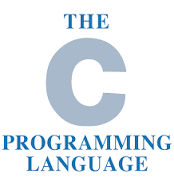Search results: 92
- Teacher: Dr. Jayaprada Netrapalli ATP
Category: ATP-PG-DMC-Archive
- Teacher: Dr. Suma Uppalury ATP
Category: ATP-PG-DMC
- Teacher: Dr Vadlani Visiting Faculty
Category: PSN-PG-DMC
- Teacher: Dr Vadlani Visiting Faculty
Category: PSN-PG-DMC
- Teacher: Dr. Suma Uppalury ATP
Category: ATP-PG-DMC
- Teacher: Ms. Mithula Vasantha ATP
Category: ATP-PG-DMC
- Teacher: Sri Karthik Ramesh Visiting Faculty
Category: PSN-PG-DMC
This VLSI stream is designed to give additional edge to the students of this M.Tech. program by way of specializing in VLSI technology. With basic knowledge of optoelectronics, fiber
optics and communications learnt from the core papers, the students can opt to pursue this
stream to be able to go over to semiconductor industry.
PE-VLSI-1: Principles of VLSI: To teach basic principles of VLSI with introduction to CMOS theory, IC design and characteristics and implementation strategies.
optics and communications learnt from the core papers, the students can opt to pursue this
stream to be able to go over to semiconductor industry.
PE-VLSI-1: Principles of VLSI: To teach basic principles of VLSI with introduction to CMOS theory, IC design and characteristics and implementation strategies.
- Teacher: Dr. Sai Muthukumar V PSN
Category: PSN-PG-Physics
This course is designed to acquire a tool set for understanding how the microscopic world works. It introduces the basic postulates, the concept of states, observables, the peculiar role of measurement in quantum mechanics.
Matrix and wave formulations of quantum mechanics in finding the energy spectrum and the states of quantum systems.
Dirac's notation is introduced.
Emphasis is given to the wave function approach of Schrodinger.
Relation to classical mechanics is covered.
Solving the Schrodinger wave equation (for few idealized systems) to obtain the various energy levels of the particle and their corresponding wave functions.
To solve time-independent potentials (of real systems which may not be solved exactly)
Matrix and wave formulations of quantum mechanics in finding the energy spectrum and the states of quantum systems.
Dirac's
Emphasis is given to the wave function approach of Schrodinger.
Relation to classical mechanics is covered.
Solving the Schrodinger wave equation (for few idealized systems) to obtain the various energy levels of the particle and their corresponding wave functions.
To solve time-independent potentials (of real systems which may not be solved exactly)
- Teacher: Dr. K Vijaya Sai PSN
Category: PSN-PG-Physics
In this course, we will learn the underlying physics of Lasers and laser systems by combining the knowledge of gain media together with the aspects of design, configuration and operation of lasers. By the end of the course, students will understand basic light matter interaction,
characteristics of atomic transitions and line broadening mechanisms, the necessary and
sufficient conditions for laser operation, basic laser beam characteristics and its relation to
cavity parameters, steady-state and transient operations, threshold requirements, different
types of lasers and laser applications.
characteristics of atomic transitions and line broadening mechanisms, the necessary and
sufficient conditions for laser operation, basic laser beam characteristics and its relation to
cavity parameters, steady-state and transient operations, threshold requirements, different
types of lasers and laser applications.
- Teacher: Gowrishankar Ramadurai PSN
Category: PSN-PG-Physics
- Teacher: Sayee Manohar K MDH
Category: Brindavan Campus-DMC-2024-25
- Teacher: Dharmendra Kalita
Category: Brindavan Campus-DMC-2024-25
- Teacher: Dharmendra Kalita
Category: Brindavan Campus-DMC-2024-25
- Teacher: Prof . Sai Giridhar
Category: Brindavan Campus-DMC-2024-25
1. Introduction to electronic spreadsheets
2. Entering Data and series, Navigating in a sheet and across sheets
3. Editing and Formatting Data
4. Cell Referencing
5. Select functions-
a. Logical,
b. Mathematical,
c. Statistical,
d. Date and Time,
e. Text,
f. Financial
6. Basic array functions
7. Auto Sum
8. Lookup functions
9. Creating Table
10. Graphs and Charts
11. What-if analysis
12. Analysis using Pivot tables
13. Basic use of Solver Add-in
14. Data Analysis package and utilities
15. Practice sessions
2. Entering Data and series, Navigating in a sheet and across sheets
3. Editing and Formatting Data
4. Cell Referencing
5. Select functions-
a. Logical,
b. Mathematical,
c. Statistical,
d. Date and Time,
e. Text,
f. Financial
6. Basic array functions
7. Auto Sum
8. Lookup functions
9. Creating Table
10. Graphs and Charts
11. What-if analysis
12. Analysis using Pivot tables
13. Basic use of Solver Add-in
14. Data Analysis package and utilities
15. Practice sessions
- Teacher: MDH-Sai Vinod M S MDH
- Teacher: MDH-Sai Manohar S MDH
Category: Brindavan Campus-DMC-2024-25
Category: NG-WINTER SEMESTER
- Teacher: Bhagya Gayathri Nemani
Category: ATP-UG-DMACS-Archive
- Teacher: Aarthi R. M. ATP
Category: ATP-PG-English-Archive
- Teacher: Rani P. L. ATP
- Teacher: Siddhartha R PSN
Category: ATP-UG-English-Archive
- Teacher: Sai Archana Murthy ATP
Category: ATP-UG-English
- Teacher: Maitali Khanna ATP
Category: ATP-UG-English
Category: Languages
- Teacher: Mrs. Santoshi Kumari Gorle ATP
Category: ATP-UG-Maths
- Teacher: Mrs. Santoshi Kumari Gorle ATP
Category: ATP-UG-Maths
- Teacher: Sri Sapan Gupta Asst. Professor BRN
Category: Mathematics
UMAT 506-Software Lab - I: Introduction to C Programming
 C is a general-purpose, procedural computer programming language supporting structured programming, lexical variable scope, and recursion, with a static type system. By design, C provides constructs that map to typical machine instructions. Wikipedia
C is a general-purpose, procedural computer programming language supporting structured programming, lexical variable scope, and recursion, with a static type system. By design, C provides constructs that map to typical machine instructions. WikipediaTyping discipline: Static, weak, manifest, nominal
Developer: Dennis Ritchie & Bell Labs (creators); ANSI X3J11 (ANSI C); ISO/IEC JTC1/SC22/WG14 (ISO C)
Filename extensions: c,.h
Paradigm: Imperative (procedural), structured

- Teacher: Darshan Gera BRN
- Teacher: Dr. Kurma Rao Tyada, Asst. Professor BRN
Category: BRN-UG-DMACS
- Teacher: Sai Prabhakar Balantrapu
Category: PSN-UG-Economics